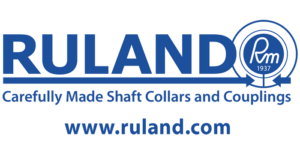 Bobby Watkins for Ruland Manufacturing on steady state and max torque:
Bobby Watkins for Ruland Manufacturing on steady state and max torque:
The difference between steady state and max torque. In many applications, there is a motor, which has a maximum torque rating, but it’s never used. Some people like to size their coupling based on max torque, and the coupling still may be able to handle it, but steady state torque or actual driving torque is probably a better way to size the coupling. It is a good idea to have the coupling be the weak point in the system. That’s usually something that’s preferable. If something goes wrong, something jams up, you want the coupling to fail. You don’t want the coupling to be so strong that the motor gets destroyed and the actuator gets destroyed. Derating torque capacity based on motion type for beam, bellows, and disc couplings. Some of our couplings when you’re sizing them will give what we call a rated torque and that is reversing single direction, it doesn’t matter. This is the rated torque capacity of the coupling.
Some of our couplings we list as static torque. We also list the note that says, listen, if you’re going single direction or stopping before you reverse, this is the formula to use and it’s divided by two. If you’re doing instant reversing or a reverse move where there’s a shock load, you have to derate the coupling, the beam type, bellows, and disc to accommodate that spike in torque at reverse and it’s a consideration when you’re calculating the actual dynamic torque rating of the coupling.
Again, understanding how couplings are rated. Oldhams have a break torque. Jaws have a peak torque. If you look at our jaw couplings, we’ll list a rated torque, which is for design purposes. We’ll also list a peak torque on jaw coupling spiders. I’ll tell you what that means. Peak torque means if you hit this point or this amount of torque, you’ve damaged the spider beyond the point where it can rebound, so you’ve actually damaged the spider and you need to replace it, if it sees the peak torque listed.
Ruland
www.ruland.com
Leave a Reply